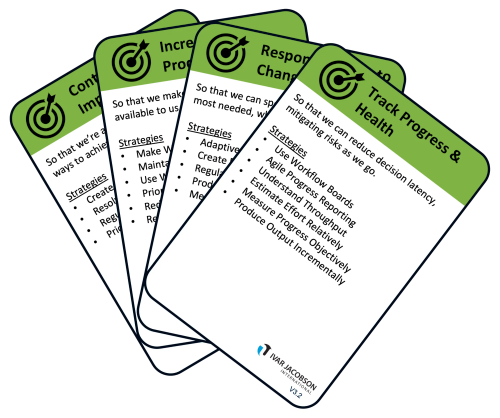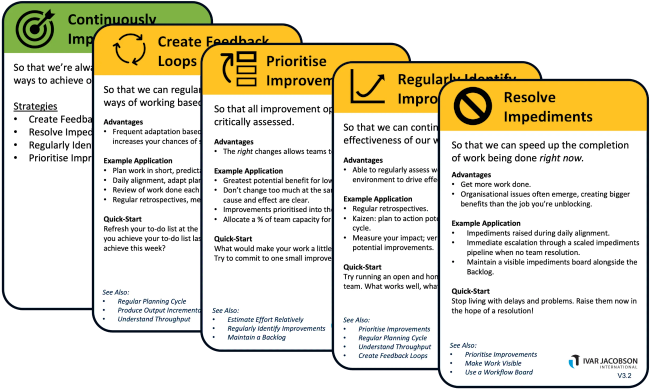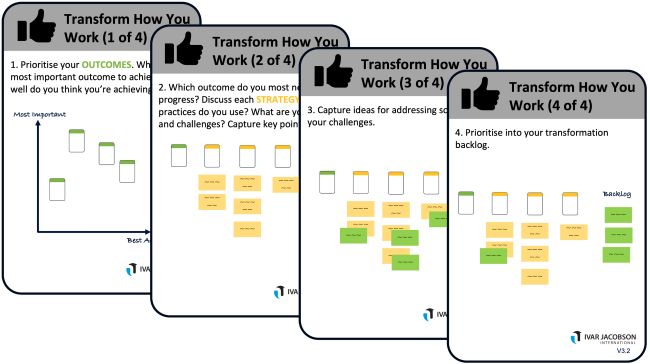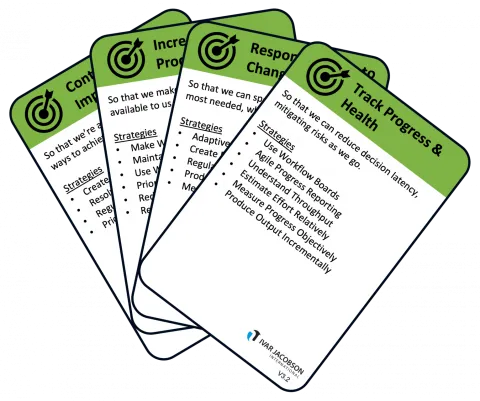Introduction
Method Agnostic Agility: I’ve been working with a large government defence organisation over the last couple of years, helping to lead an agile transformation across a very diverse set of contexts covering 30,000+ individuals. The catch is that most divisions and teams with whom I’ve worked are not developing software.
They are not product development teams at all, and their patterns of work are not typical when compared to my experience of “normal” agile transformations, so initially for myself and other agile coaches, there has been something of a culture shock, followed by a period of un-learning some of the stereotypes and short-cuts that we may have been tempted to fall back on. Even those things that we think of as fundamental to agility – such as the agile manifesto – have not tended to provide a great starting point for a conversation without at least a little bit of re-wording and interpretation.
Methods and frameworks that have been widely adopted in the software industry under the banner of agility have certainly helped many of the teams I’ve encountered, but not without some creative interpretation of the rule books. Agility as I have traditionally presented it hasn’t immediately resonated.
Does this mean that groups not involved in product development cannot benefit from adopting an agile mind set? Of course not! I considered it partly a question of how I speak to agility in a way that addresses what each division and team is doing and what is important for them to achieve.
I wanted to start conversations in a different place by creating something that expresses agility at a more fundamental level. For me, this has provided practical applications for basic education, driving incremental transformation and continuous improvement, jargon free and method agnostic.
Start with Outcomes
As any good change leader may confirm, clear outcomes help to make a transformation meaningful. Agility isn’t the end game, it’s a way to hopefully reach your goals.
This seemed like a good place to begin. Why would anybody in this organisation want to engage with the transformation when agility itself was the starting point for many discussions, conflated with practices and methods and patterns, having no immediate bearing on their reality?
As a first stab, it came down to four general outcomes:
- Increase productivity (so that we make best use of the capacity available to us at a more sustainable pace.)
- Continuously improve (so that we’re always striving to find better ways to achieve our goals.)
- Track progress and health (so that we can reduce decision latency, mitigating risks as we go.)
- Respond quickly to change (so that we can spend effort where it is most needed, while minimising disruption.)
This proved to be immediately effective for clearly articulating the intent, making the agile transformation something that people could begin to relate to.
Introducing Agile Thinking
With a better handle on the intent of the transformation, expressed as a more easily consumed summary of outcomes, the next question to tackle was how we start to move toward achieving these goals in an agile way. What is an agile mind set? What do agile teams strive to be? What strategies do they follow when considering their ways of working?
I started to draw this up on a whiteboard, brainstorming ideas around each outcome – how do agile teams look to achieve this stuff?
I and other agile coaches distilled this down to a set of strategies, avoiding any close association with specific methods or practices; we thought what the practices are achieving, as opposed to what are the practices. This is debatable, and indeed we did debate but surprisingly without strong disagreement, reaching consensus relatively quickly. That’s not to say this became definitive or inflexible; it just worked for us.
At this point I turned my attention to the presentation of the information. I had some basic principles in mind:
- Easy to consume.
- Can be broadly understood without too much explanation – brevity!
- One format should cover many uses (posters, hand-outs, workshop facilitation, etc.)
As part of the IJI family I’ve been quite used to using Essence and ideas inspired by Essence in many engagements, so my mind immediately went to the notion of using cards. They force brevity and clarity by not having much space to waffle (not true of blogs, judge that as you will!) They provide a great basis for serious game playing, workshop facilitation, pocket-reference, can be blown up to poster size, etc. etc.

FIGURE 1: The Method Agnostic Agility Cards
Expanding on Strategies
I then set about expanding the content, describing the advantages of each strategy, giving some example applications, and including a quick-start – something an individual or team could try right now to move the needle a little bit. Same rules: each explanation needed to fit on one card to keep the deck small, straightforward and consumable.
You are of course free to debate the wording used on the cards, perhaps feeling it doesn’t fit the context you’re working with. That’s ok; take the idea and rework it.

FIGURE 2: Strategies Expanded
Begin Transforming How Teams Work
One use for the cards, which I’ve tried out in the wild a few times and always felt this has given me a much better quality of engagement, is to facilitate and focus discussions when building your transformation or improvement backlog. The instructions for running a workshop, taking the form of a planning session or a retrospective, are included in the download.

FIGURE 3: Focussed Instructions
I look forward to reading your feedback and would love to hear how you get on with the cards!
Richard Cook is a Principal Consultant for Ivar Jacobson International.
Download the full deck of cards below
Visit our Coaching Card Download Hub for lots of other great card assets. We hope these ideas on Method Agnostic Agility resonate with you!

